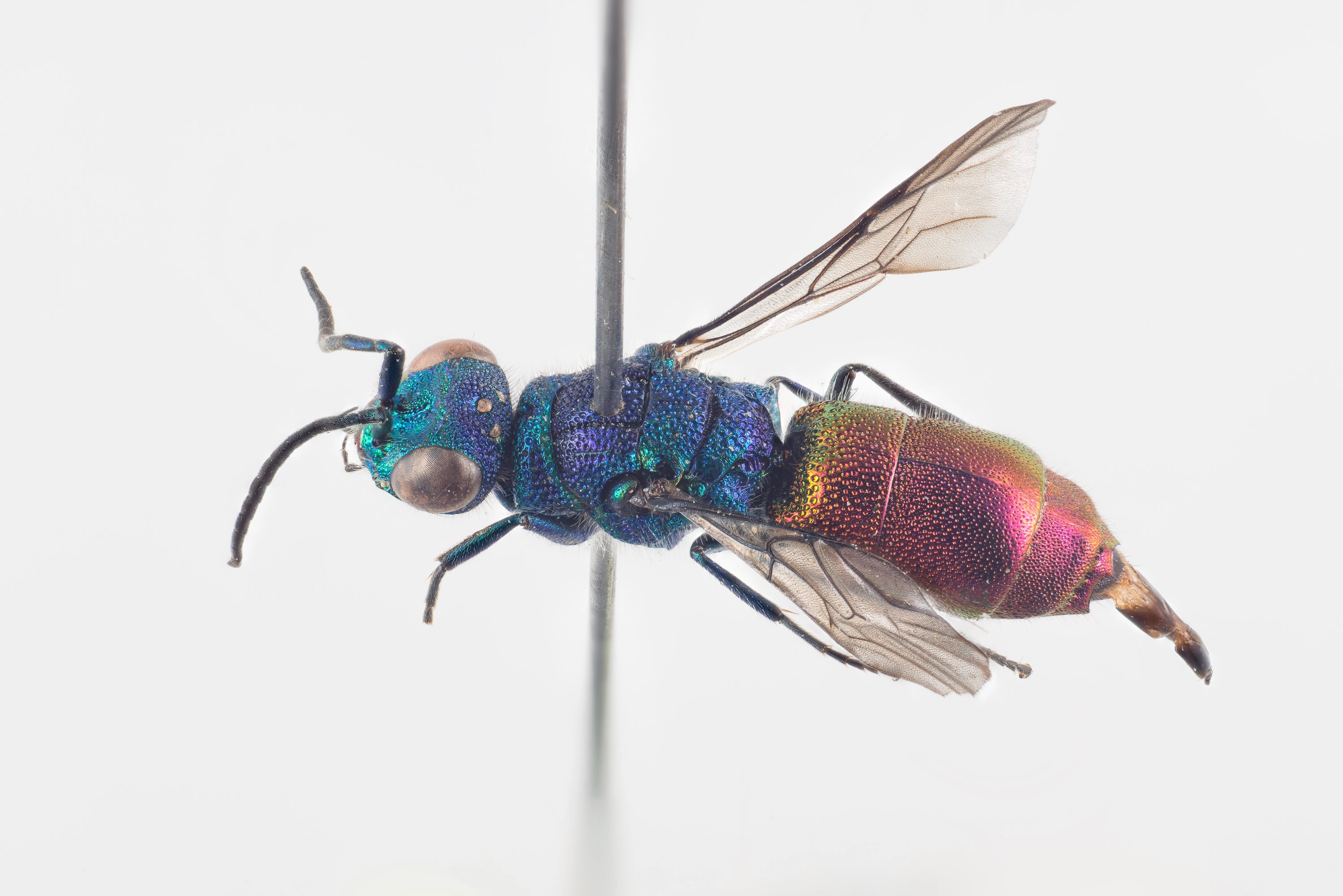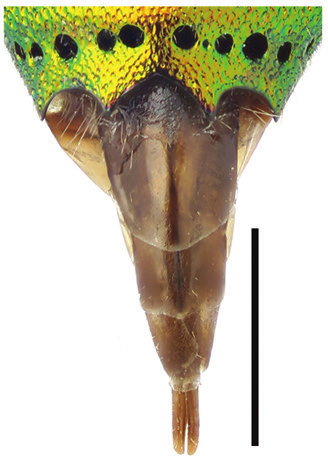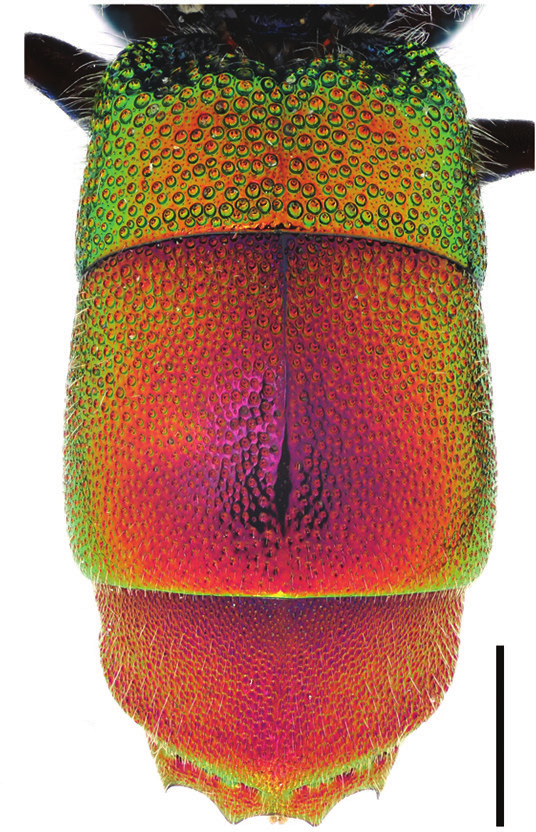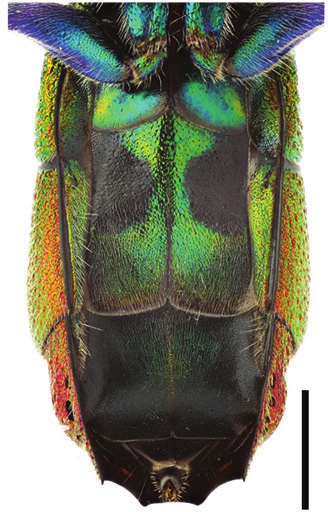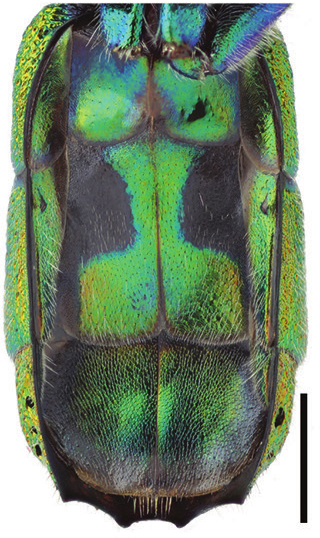Chrysis solida
A common species in forest margins and clearings with sun-exposed dead wood. The hosts include the Eumeninae Ancistrocerus trifasciatus. The species can be separated from closely related species by the broad and dark ovipositor, and the fine punctured T2 compared with the coarse punctation of T1.
- Innhold
- Diagnosis
- Distribution
- Biology
- Remarks
Diagnosis
Figure 91
Ovipositor, dorsal view: C. solida ♀. Scale 1 mm.
Figure 101
Metasoma, dorsal view: C. solida ♀. Scale 1 mm.
Figure 120
Metasoma, ventral view: C. solida ♀. Scale 1 mm.
Figure 125
Metasoma, ventral view: C. solida ♂. Scale 1 mm.
Figure 137
Genital capsule, dorsal view: C. solida ♂. Scale 0.5 mm.
Length 5–9 mm.
The species is closely related to C. mediata, but the body is usually smaller and with more parallel sides (Fig. 101), the head is broader in frontal view (distinctly broader than its height), the punctation of T2 is often somewhat denser anteriorly (Fig. 101), the surface of T3 is not as shiny (Figs 101) and the colouration is predominantly darker. The species can be confused also with e.g. C. schencki, C. angustula and C. corusca. However, the ovipositor is broader (Fig. 91) and the inner margin of paramere is angled (Fig. 137) (not rounded). Also the green-blue colouration of S2 and the rounded shape of the black spots (Fig. 120, 125) are characteristic for C. solida.
Distribution
Denmark, Estonia, Finland, Latvia, Lithuania, Norway, Sweden. Common.
Trans-Palearctic: from western Europe to Japan (Linsenmaier 1997).
Be aware that the records present in the GBIF map may be misleading for some countries due to unrevised data sets or missing information.
GBIF Taxon: Chrysis solida Haupt, 1956Biology
Habitat: forest margins, clearings and gardens with sun-exposed dead wood. Adults fly near walls of buildings (log barns, sheds etc.), dead tree trunks (e.g. Betula, Populus, Quercus, Salix), log piles and poles. They rarely visit flowers of Apiaceae (our own obs.).
Flight period: late May to early September.
Host: primarily Ancistrocerus trifasciatus (Müller), but occasionally also Euodynerus notatus (Jurine) and possibly Symmorphus debilitatus (Saussure) (Vespidae) (Pärn et al. 2014).
Remarks
C. solida and C. mediata are very similar morphologically and genetically despite clear differences in their biology and host selection (Soon et al. 2014). Reliable species identification is not always possible without information on the host or habitat.
